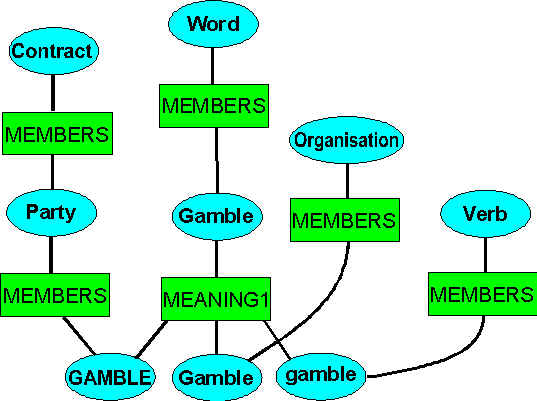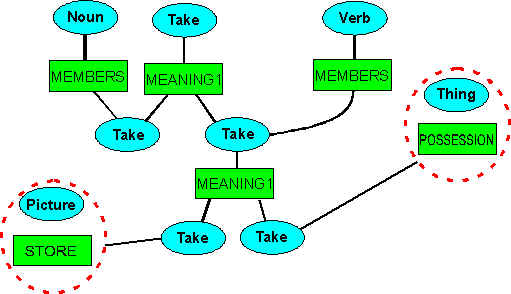
The MEANING1 operator behaves in a similar manner to the MEMBERS function, but is intended for objects which all have the same name. As an example, we might have
gamble
Gamble
GAMBLE
as words in a document. They each have different meanings, but are accessed through the same case-insensitive dictionary lookup. Similarly, we can have different meanings with exactly the same spelling
glass - the base material, hard and transparent when cold, molten at 1400 degrees Celsius
glass - the utensil we drink from
MEANING1 allows us to access the different meanings or senses through the one name.

If we look up Gamble in the dictionary, we might find three possible objects, each with a different meaning. This is further complicated by the fact that they may be in different dictionaries - one being in a dictionary local to the contract, one being in a global dictionary, and perhaps another one, with different characteristics, in Wordnet. This situation is handled by creating local structure similar to that shown - the different meanings are brought together to allow us to differentiate among them more easily.
We may be able to resolve the specific object using its capitalisation, but this is unreliable except for complete capitalisation, as
He dropped the glass on the floor.
Glass is a hard, brittle structural material.
GLASS is a party to the contract.
Unlike the MEMBERS function, which is not searched down through to find attributes for words, the MEANING1 operator is searched through to find its members, unless a particular member has already been identified by some textual attribute. The set of member objects is delivered to the ANDPARSE operator, which searches up from the set of objects to find all possible attributes. As attributes are pruned, so will any objects be if all their attributes are no longer valid. This is the advantage of different objects representing different meanings - the alternative sets are separable, and can be more easily differentiated by pruning of attributes. Different objects are also necessary if the capitalisation is different - a specific object is needed for this sort of attribute.
If the object directly found by dictionary lookup, the "Master" of the operator, has attributes (Word in the diagram), then these attributes are shared by all the member objects as they search up through MEANING1 just as they would through a MEMBERS function.
For complex relations, the MEANING1 operators may cascade, providing a hierarchy of meanings, as
